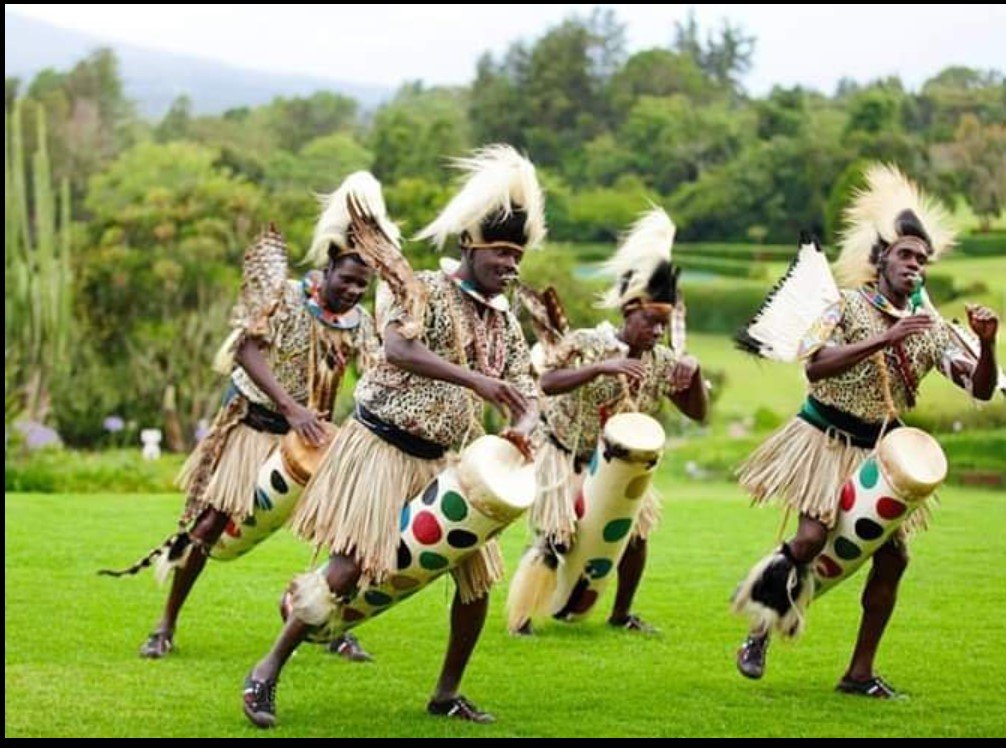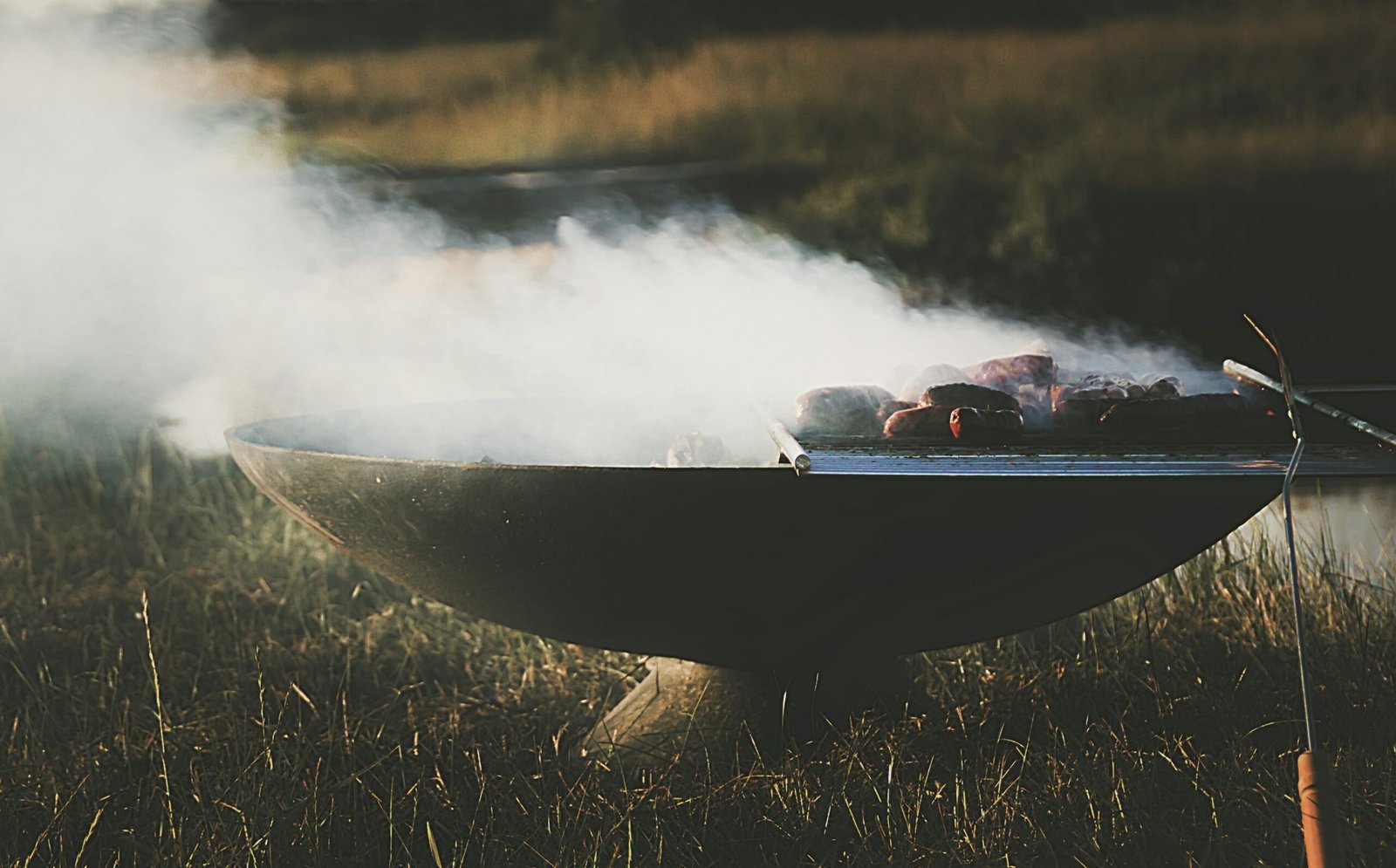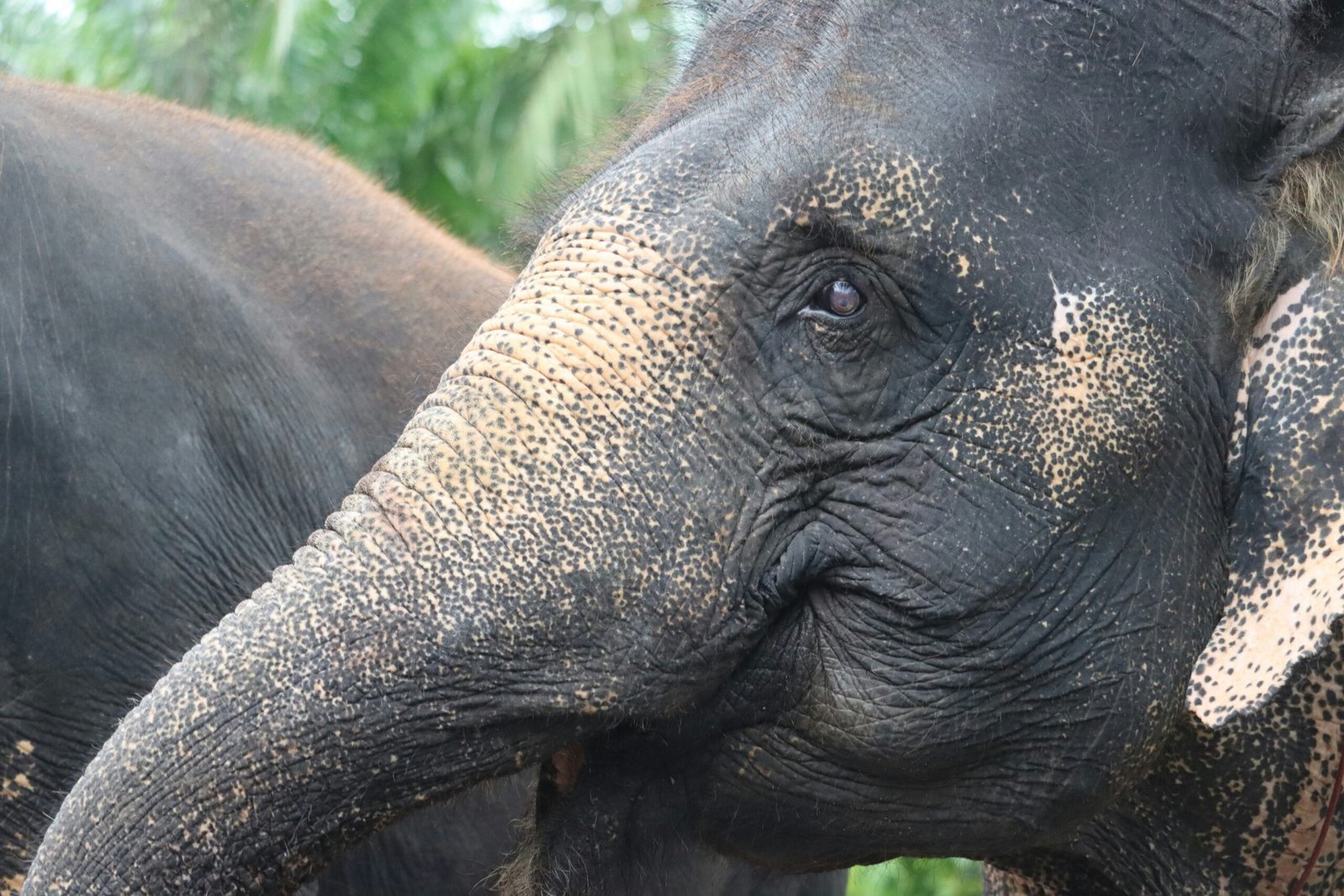
Introduction to the Chuka Drumming Tradition
The Chuka community, residing in the Central region of Kenya, is one of the many vibrant ethnic groups that contribute to the rich tapestry of the nation’s cultural heritage. This community is renowned for its unique practices and traditions, among which drumming holds a vital place. Drumming, in the Chuka culture, transcends mere entertainment; it is a profound form of communication, celebration, and storytelling that has been passed down through generations. The rhythmic beats produced by the Chuka drummers resonate deeply within their society, serving not only to entertain but also to connect individuals and foster a sense of community.
Within the Chuka community, drums are not just instruments; they embody the stories, history, and dreams of the people. Traditionally, drumming is a communal activity that brings together individuals of all ages, reinforcing social bonds and collective identity. Events such as weddings, ceremonies, and local festivals often feature drumming as a central element, with rhythms that evoke emotions ranging from joy to solemnity. The beats of the drums serve as a language of their own, conveying messages that might be too complex or sensitive to express through spoken word alone.
Moreover, the Chuka drumming tradition is interwoven with various aspects of their culture, including dances and rituals that showcase the community’s values and beliefs. As they perform, drummers embody their ancestral lineage and honor their forebears, ensuring that the cultural significance of their craft endures. This rich drumming heritage not only entertains but also plays an integral role in the spiritual and social life of the Chuka people, making it a vital aspect of their identity. Through this exploration, one can appreciate how drumming serves as a compelling lens into the broader Chuka culture, setting the stage for a deeper understanding of their remarkable artistry.
Historical Roots of Chuka Drumming
Chuka drumming, an integral aspect of the cultural heritage of the Chuka people in Kenya, boasts a complex historical background that reflects both its origins and evolution over centuries. The roots of this vibrant musical tradition can be traced back to the pre-colonial era, where the Chuka community utilized drumming as a means of storytelling and social cohesion. Drums were often crafted from local materials, featuring animal skins and wood, creating a unique sound that resonated in rituals and communal festivities.
Throughout history, the influences on Chuka drumming have been significant, especially during periods of migration and cultural exchange. The Bantu migrations, which brought various ethnic groups into present-day Kenya, introduced new rhythms and techniques that enriched the Chuka drummers’ repertoire. The integration of other musical styles can be identified as Chuka drummers interacted with neighboring communities, who also utilized drumming for their own cultural practices.
Colonialism in the late 19th and early 20th centuries marked a pivotal point in the evolution of Chuka drumming. As foreign powers exerted control over the region, traditional practices faced new challenges. However, this period also sparked a renaissance of indigenous music as a form of resistance and cultural pride. Chuka drumming underwent transformation through this resistance, as drummers began to employ their craft as a means of affirming identity amidst the pressures of colonial rule.
In contemporary times, Chuka drumming continues to be a significant part of the cultural landscape, preserving historical narratives while adapting to modern influences. Community gatherings, weddings, and other festivities prominently feature drummers, who not only entertain but also serve as custodians of heritage. The historical roots of Chuka drumming illustrate a dynamic interplay between tradition and change, showcasing its resilience and the enduring power of music in connecting people across generations.
The Unique Techniques of Chuka Drummers
The Chuka drummers of Kenya are renowned for their distinctive drumming techniques that are deeply rooted in the cultural fabric of the Chuka community. These techniques consist of complex rhythms and patterns that not only embody the spirit of their heritage but also serve various communal purposes, including celebrations, storytelling, and ancestral rituals. At the heart of their musical expression are specific rhythmic structures that are often characterized by polyrhythms, where multiple contrasting rhythms intertwine seamlessly, creating a rich auditory tapestry.
The drumming techniques employed by Chuka artists emphasize syncopation and dynamic shifts that engage both the performer and the audience. Drummers utilize a methodology that encourages improvisation, where each drummer contributes their unique flair to familiar pieces, ensuring that every performance feels fresh and alive. In addition to these techniques, Chuka drummers often communicate through their beats, employing rhythms to signify different emotions or narratives, which reflect the community’s customs and beliefs.
The drums themselves play an integral role in the drumming tradition, with the common types including the “ngoma” and “kimande.” The construction of these instruments showcases exemplary craftsmanship, as they are typically crafted from locally sourced materials such as wood and animal skins. The process of making these drums requires skilled artisans who are well-versed in the traditional methods passed down through generations. The skins are meticulously selected and prepared, and the wood is carved and polished to enhance its sound quality. Each drum’s unique dimension and tuning contribute to the distinct sound it produces during performances.
Overall, the techniques and craftsmanship of Chuka drummers represent a culmination of cultural knowledge and artistic expression, making their drumming an extraordinary facet of Kenya’s rich musical heritage.
The Role of Drumming in Chuka Ceremonies and Festivals
Drumming holds a significant place in the cultural landscape of the Chuka community, especially during various ceremonies and festivals. It serves not only as a source of entertainment but also as a crucial element that cultivates a sense of identity and community cohesion. At events such as weddings, initiation rites, and harvest celebrations, drumming is integral to the overall atmosphere, enhancing both the emotional and spiritual experiences of participants.
During weddings, the rhythmic sounds produced by Chuka drums help to create an environment filled with joy and celebration. Music and dance are central to the festivities, allowing families and friends to engage in expressions of happiness. The drummers often play a pivotal role in invoking good fortune and unity for the couple, ensuring that their journey together begins on a note of harmony and bliss.
Similarly, initiation rites mark a significant transition in the lives of young individuals in the Chuka community. The presence of drummers during these ceremonies serves to elevate the emotional stakes, transforming the event into a vital community experience. The powerful beats resonate with the participants, symbolizing strength, resilience, and the passage into adulthood while also reinforcing social bonds among the youth and elders present.
Harvest celebrations, pivotal in the agricultural calendar, also heavily feature drumming. The rhythmic beats echo the community’s gratitude for the year’s blessings, and they help manifest a collective spirit of joy and remembrance. This joyous expression through drums fosters a sense of belonging and interdependence among community members, who come together to acknowledge their shared efforts and the fruits of their labor.
In summary, drumming in Chuka ceremonies and festivals significantly enhances the spirit of these events, fostering community bonding and celebrating life’s milestones through vibrant, rhythmic expressions.
Profiles of Renowned Chuka Drummers
Among the vibrant musical landscape of Kenya, the Chuka drummers stand out as custodians of a rich cultural heritage. Their exceptional craft blends rhythm, storytelling, and artistry, creating a unique auditory experience. Notable drummers from the Chuka community have played significant roles in preserving traditional techniques while fostering the growth of contemporary influences.
One prominent figure is John Mwenda, a master drummer who has dedicated over three decades to the art of Chuka drumming. Mwenda recalls his childhood, where he was mesmerized by the powerful beats emanating from local ceremonies. Through rigorous training, he honed his skills and began teaching younger generations. He often states, “Drumming is not just a skill; it is the heartbeat of our culture.” His workshops encourage the infusion of modern rhythms while maintaining traditional elements, showcasing the adaptability of Chuka music.
Another influential drummer is Grace Nyaga, who has emerged as a leader in promoting Chuka music globally. Nyaga has collaborated with various international artists, blending Chuka drumming with other genres to reach broader audiences. In an interview, she expressed, “Music has no boundaries; it connects us all. I aim to share the soul of Chuka drumming beyond our borders.” Her efforts have not only elevated Chuka drumming but also fostered cultural exchanges that celebrate diversity in music.
Additionally, Samuel Kinyanjui has been instrumental in documenting the history and rhythms of Chuka drumming. His commitment to archiving the craft has raised awareness about its significance. “Every beat has a story,” Kinyanjui notes, emphasizing the drums’ role in community narratives. His contributions include recording traditional songs and developing educational materials to ensure that the next generation grasps the importance of their cultural heritage.
These drummers exemplify dedication, passion, and innovation, making significant contributions to Chuka drumming’s legacy. Their shared vision of preserving and promoting this distinctive art form cements their statuses as vital figures within the community and beyond.
Chuka Drumming in Modern Context
The Chuka drummers of Kenya have demonstrated remarkable adaptability in preserving their rich cultural heritage while embracing modern influences. As the world becomes more interconnected, these talented musicians have found innovative ways to merge their traditional practices with contemporary art forms. Through international collaborations, Chuka drummers are now able to share their unique rhythms and techniques with diverse audiences, fostering cultural exchange that enhances the appreciation of their craft.
One significant development is the fusion of Chuka drumming with various music genres. Artists are beginning to integrate the intricate polyphonic rhythms characteristic of Chuka drumming into popular music styles such as jazz, hip-hop, and even electronic music. This blending not only revitalizes interest in the traditional sound but also grants it new relevance in the global music landscape. As musicians experiment with these new combinations, they expand the vocabulary of Chuka drumming while attracting younger generations who may appreciate it through a modern lens.
Moreover, participation in global music festivals has significantly elevated the profile of Chuka drummers. These events provide a platform for showcasing traditional performances alongside cross-genre collaborations, effectively reaching wider audiences and generating interest in Kenyan musical heritage. The exposure allows performers to connect with global audiences, enabling them to gain both recognition and support for their craft.
The rise of technology and social media has played a pivotal role in this transformation. Chuka drummers utilize platforms such as YouTube, Instagram, and Facebook to share videos, promote events, and connect with fans. These tools enhance their ability to reach international audiences, allowing their music to resonate far beyond the borders of Kenya. By harnessing the power of social media and online streaming, they can preserve their traditions while ensuring that the essence of Chuka drumming continues to thrive in modern contexts.
Challenges Facing Chuka Drummers Today
The Chuka drummers of Kenya represent an integral part of the cultural heritage of the Meru community. However, they are currently confronting a myriad of challenges that threaten the preservation and growth of their exceptional craft. One major issue is the risk of cultural erosion, as younger generations increasingly gravitate towards modern forms of entertainment. Traditional drumming, which has historically played a vital role in community gatherings and social functions, is losing its prominence in the face of contemporary music genres. This cultural shift raises concerns about the sustainability of the Chuka drumming tradition.
Another significant challenge facing these talented drummers is the competition from mainstream music. With the proliferation of digital platforms and the global reach of popular music, traditional forms of expression often struggle to gain visibility. Many young individuals are drawn to popular artists, completely overshadowing the cultural narratives and rhythms embedded in drumming practices. This shift not only threatens the survival of traditional drumming but also diminishes the cultural identity of communities that rely on these artistic expressions.
Furthermore, globalization plays a pivotal role in altering traditional practices within the Chuka drumming community. The influx of foreign musical influences has led to the blending of styles, which while not inherently negative, may dilute the authentic essence of Chuka drumming. Traditional drummers are faced with the challenge of adapting to these changing circumstances without losing the core elements that define their artistry. It is crucial for the Chuka drummers to navigate this landscape strategically, ensuring that they keep their cultural identity intact while still appealing to modern audiences.
Addressing these challenges requires a collective effort from the community, local leaders, and cultural advocates to support the Chuka drummers and highlight the significance of their craft in the rich tapestry of Kenyan heritage.
Preservation and Promotion of Chuka Drumming
The Chuka drumming tradition, rich in cultural history and significance, is currently supported by various initiatives and organizations aimed at its preservation and promotion. Recognizing the importance of sustaining this unique art form, numerous programs have been established to engage both the younger and older generations in the craft of drumming. Workshops play a vital role in this effort, providing hands-on experiences that allow participants to learn directly from seasoned drummers. These events not only teach technical skills but also encapsulate the deeper cultural narratives embedded in Chuka rhythms.
Educational programs tailored for schools and community centers serve as another significant avenue for fostering interest and appreciation for Chuka drumming. These programs are designed to educate participants about the historical context and cultural significance of the drums, thus enriching their understanding of the art form. By integrating drumming into school curriculums, organizers aim to instill a sense of pride and ownership among students, encouraging them to explore their cultural heritage while also developing their musical abilities.
Community projects aimed at reviving and maintaining traditional drumming practices have also gained traction. These initiatives often involve collaboration among local artists, cultural organizations, and government entities interested in safeguarding this unique tradition. Through public performances, cultural festivals, and exhibitions, the Chuka drumming community showcases its talent and invites the public to experience the energizing influence of its beats firsthand. Such efforts not only bolster community solidarity but also enhance the visibility of Chuka drumming, drawing in a wider audience that appreciates the uniqueness of this art form.
Through the commitment of these initiatives, Chuka drumming is gaining renewed interest and respect, ensuring that this mesmerizing aspect of Kenyan culture is preserved for future generations to enjoy.
Conclusion: The Future of Chuka Drumming
Chuka drumming, deeply rooted in the cultural ethos of Kenya, represents more than just a musical tradition; it signifies an enduring legacy that has been passed down through generations. As we reflect on this timeless craft, it becomes increasingly important to consider the future of Chuka drumming and the factors that will contribute to its sustained relevance. The art form not only brings joy and a sense of identity to its practitioners but also plays a critical role in fostering community cohesion through shared experiences.
The nurturing of young talent in the realm of Chuka drumming is essential for ensuring its continuation. As older drummers become elders, they must share their skills and knowledge with the youth, engaging them in both traditional training and modern interpretations. Workshops and community events can serve as platforms where the younger generation has opportunities to learn and showcase their skills. By incorporating contemporary styles and innovations, young drummers can breathe new life into this cherished art form, preserving its essence while making it relevant to today’s audiences.
Moreover, community involvement is pivotal in sustaining the rich musical heritage of Chuka drumming. Local organizations, cultural institutions, and families should collaborate to create programs that promote drumming and its significance in Chuka society. Encouraging performances at local events, schools, and festivals will not only honor the tradition but also attract interest from audiences beyond the community. Furthermore, strategic initiatives that focus on digital platforms can expand the reach of Chuka drumming, allowing it to resonate with broader audiences and solidifying its place in the global music landscape.
In conclusion, the future of Chuka drumming lies in the successful transmission of its rich history to future generations and the active engagement of the community in nurturing this magnificent craft. By promoting education, innovation, and collaboration, the Chuka drummers can ensure their exceptional musical legacy endures for many years to come. This drumming tradition can be found as the foundation of East African genres like Rhumba and also across the Atlantic with Jazz and spoken word. I share below my Poem Courage!!





